Mitsubishi Lancer used review: The car that refused to die
This small car has been an Australian staple for more than 40 years. And despite the most recent version being 13 years old Australians are still buying thousands of them.

car advice
Don't miss out on the headlines from car advice. Followed categories will be added to My News.
Mitsubishi’s Lancer was the car that refused to die. The Lancer nameplate, on sale in Australia for more than 40 years, was supposed to end in 2018 but with so many left unsold, more than 2000 found new homes last year at knockdown drive-away prices.
The Lancer may not be the last word in excitement or refinement but it’s reliable, safe, spacious, has reasonable specification and rides and handles well. Its trump card has always been value for money. We’ll look at used examples from its final update in November 2015.
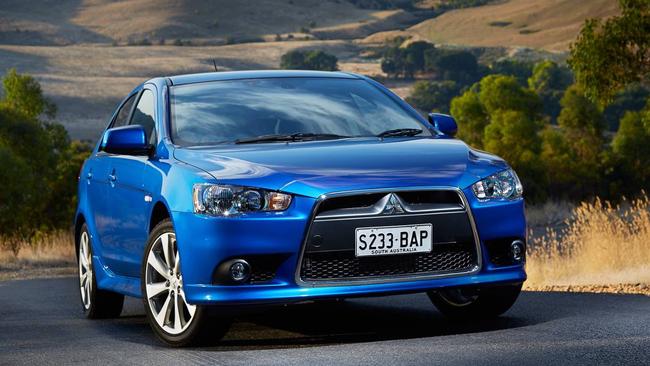
The eighth-generation Lancer hit showrooms in 2007 — a lifetime ago in automotive terms — and basically the same car, with some updates, was still selling well more than a decade later.
Incredibly, in the classifieds there are a handful in dealerships with delivery kilometres for about $20,000 on the road.
If the Lancer’s your flavour — and it has been for generations of P-platers, retirees and everyone in between — picking up an unused 2017 example with the balance of its five-year/ 100,000km warranty remaining is sound buying. Late model examples with annual kilometres are a few thousand cheaper.
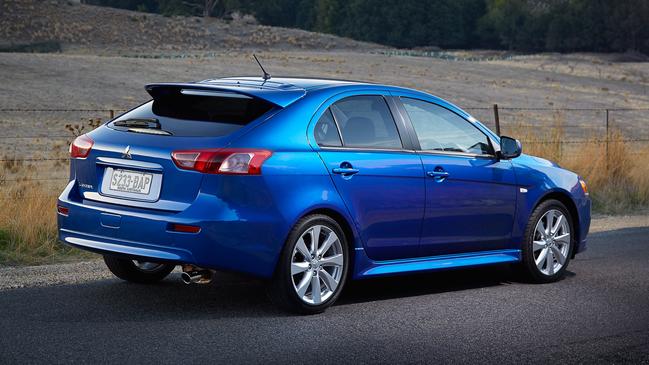
However, if you have specification and colour you can’t live without, you must embrace pre-loved Lancers. Desirable sedan and hatchback rivals include the Honda Civic, Subaru Impreza, Hyundai Elantra, Kia Cerato, Mazda3, VW Golf, Toyota Corolla and more.
Body styles were sedan and Sportback (hatchback), the latter only in range-topping guise. As typical Lancer shoppers were buyers on a budget, five-door versions are as rare as manual gearboxes — four-door sedans with less-than-thrilling continuously variable transmissions accounted for most sales.
Grades are base ES Sport, Black Edition and LS — with a 2.0-litre four-cylinder engine that was neither exciting nor terribly economical — and GSR, powered by a more willing 2.4-litre with punishing thirst of 8.9L/100km.
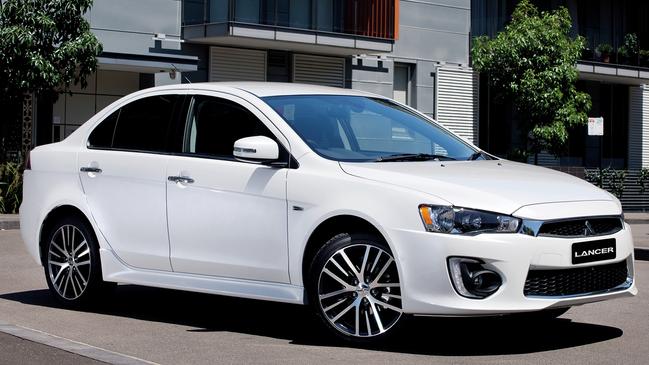
The ES Sport came with 16-inch alloys, rear spoiler, Bluetooth, USB, 6.1-inch touchscreen, rear camera, digital radio, cruise control and keyless entry. It maintained its five-star safety rating from 2013 but lacked the autonomous emergency braking found in some rivals.
The CVT-only LS was the luxury pick, adding heated, power leather seats, chrome body bits, 18-inch wheels, sports suspension, keyless entry, auto wipers and rear sensors. To go with the hotter engine, the GSR got paddle-shifters, bigger brakes and alloy pedals, and scored the LS’s goodies bar its leather seats.
Cramming the classifieds are Lancer Black Editions, based on the ES Sport sedan. These look quite menacing with black 18-inch alloys, roof panel, front grille and rear spoiler plus, in the cabin, alloy pedals and red stitching for the steering wheel.
Such style enhancements are calling cards to youngsters, so be wary some Black Editions may have been driven “enthusiastically”.
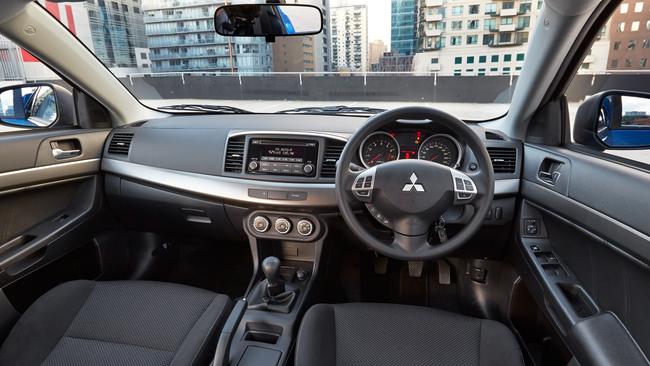
The sedan’s boot is a spacious 400L, the hatch just 330L, although loading larger items is easier with the five-door.
What to look for
Reliability is strong and any problems will have been sorted under warranty. The five-year warranty is attractive but expires at 100,000km. Ignore any showing this distance and be wary of any with 90,000km-plus.
There’s no excuse for lacking a full service history as intervals are annual or 15,000km. Mitsubishi’s capped servicing is $240 a visit, typical for the genre, so one that’s been looked after by a main dealer is ideal.
Don’t expect much sportiness on your ES Sport; similarly, the Black Edition has the looks but not the performance to back it up.
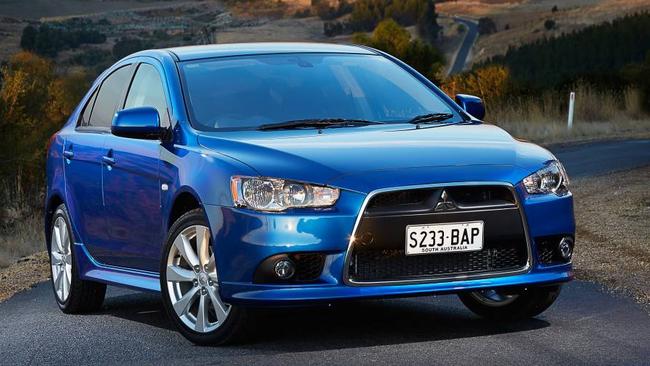
Whiny when pushed, the CVT takes some getting used to. Some owners report the cabin isn’t very well insulated against engine noise.
The manual gearbox brings a bit more driving joy but, as it’s a five-speeder, you’re left wanting a sixth gear at highway speeds.
Take a long test drive as some owners suggest the seats are uncomfortable after lengthy travel. Feel for any hesitation or vibration from the gearbox, or any nasty, metallic noises from it or the engine.
When parked, test phone connectivity and infotainment: Mitsubishi doesn’t have the world’s best set-ups, so don’t expect cutting edge.
Lancers have long been favoured by the young so avoid modified examples. Check for accident damage, excessive dings or worn rubber. Same applies if it’s a senior seller.
For a few dollars more, favour an LS or GSR. The LS’s heated leather seats give a more luxurious feel to the otherwise quite bland cabin, while the GSR’s 2.4-litre will suit those wanting a more spirited drive and decent kit.
There was a recall in October 2016 for acceleration delays due to the CVT and another in October 2017 for a power relay that could burn out and stall the engine.
Iain says: 2.5/5
Reliable, spacious, cheap and still under warranty, the Lancer’s a safe choice. There’s no modern safety kit, the infotainment is aged and there’s no economical turbo. You may find a 2016 or 2017 model but it will feel a decade old. Rivals give much more for similar money.
Owner says
Darren Patrick: I have a 2016 ES Sport with CVT. It’s an efficient and reasonably economical small family car. As expected with its rallying pedigree, it drives and handles well. The 2.0-litre is adequate for most situations; the CVT isn’t for everyone but it does the job. Those over 180cm will find entry slightly awkward but once inside it’s comfortable and well-appointed. It can accommodate two teenagers in the back, three if they’re skinny, and has a huge boot. Japan’s build quality and equipment levels are superior.
The expert says
Mitsubishi sold about 6000 examples of the CF series Lancer. Among used listings, manual transmissions account for less than 10 per cent. The bulk of those for sale are the value added limited Black Edition and about one-third are ES Sports.
For 2016, the entry-level ES Sport manual ($19,500 new) is now valued at $14,150. The LS auto ($23,500 new) is worth $17,850.
New prices were unchanged for subsequent years. For 2017, the respective used values are $15,350 and $19,150.
Resale value for the Lancer is better than average, reflecting its reputation for solid reliability, and broadly matches the Toyota Corolla but falls short of the Mazda3 and Honda Civic. It performs better than the Kia Cerato and Nissan Pulsar
2016-2017 Mitsubishi Lancer vitals
Price when new: $19,500-$23,500
Safety: 5 stars
Engines: 2.0-litre 4-cyl, 110kW/197Nm; 2.4-litre 4-cyl, 125kW/226Nm
Thirst: 6.9L-8.9L/100km
Originally published as Mitsubishi Lancer used review: The car that refused to die
